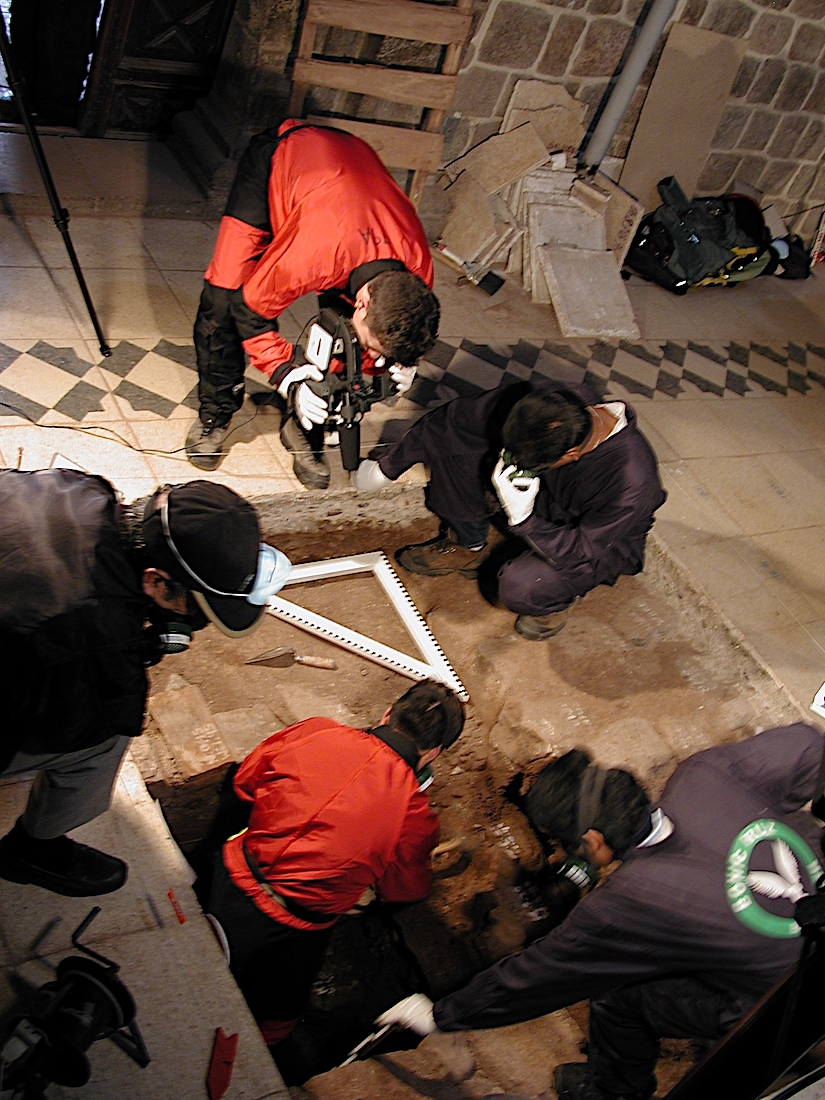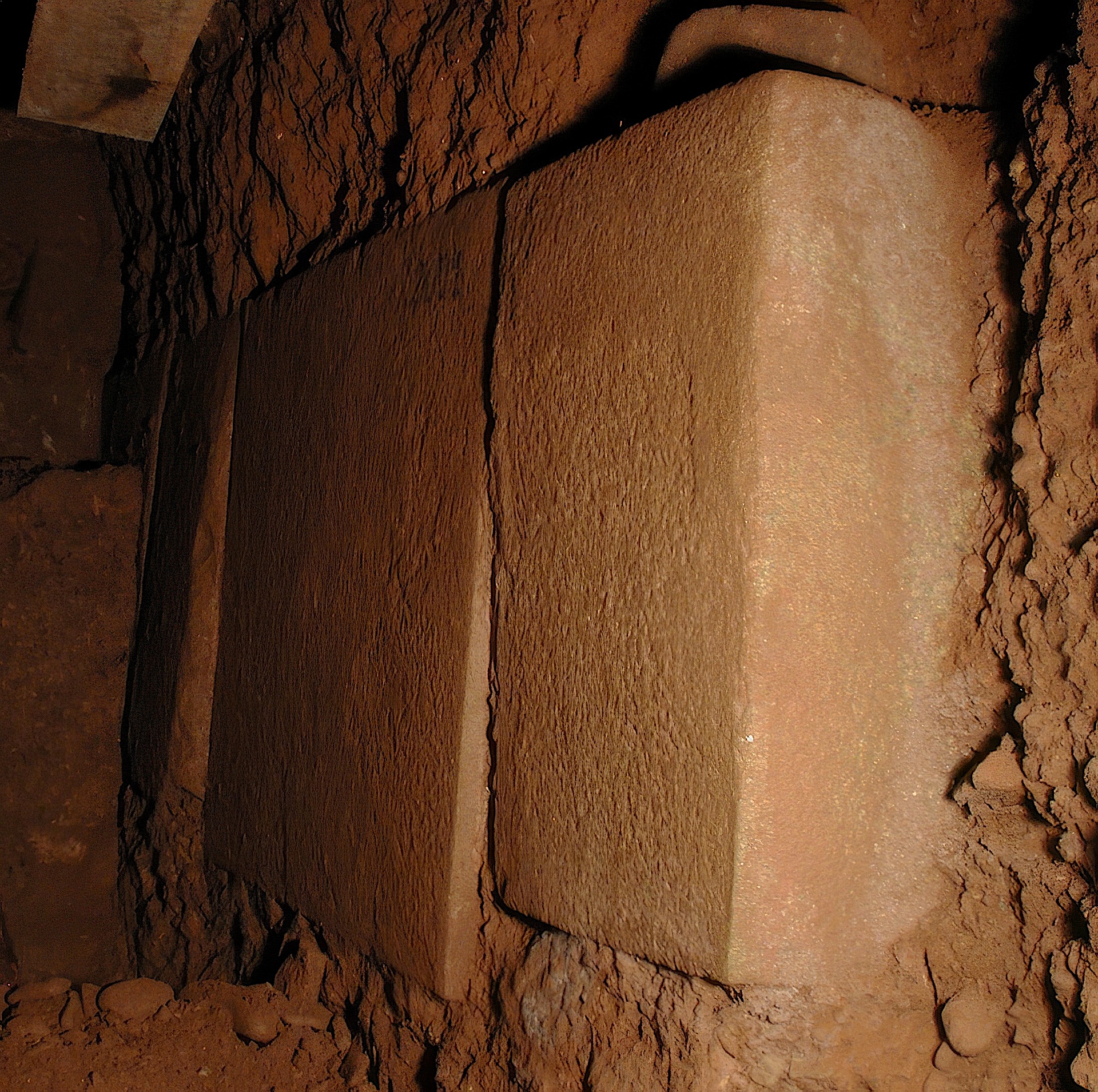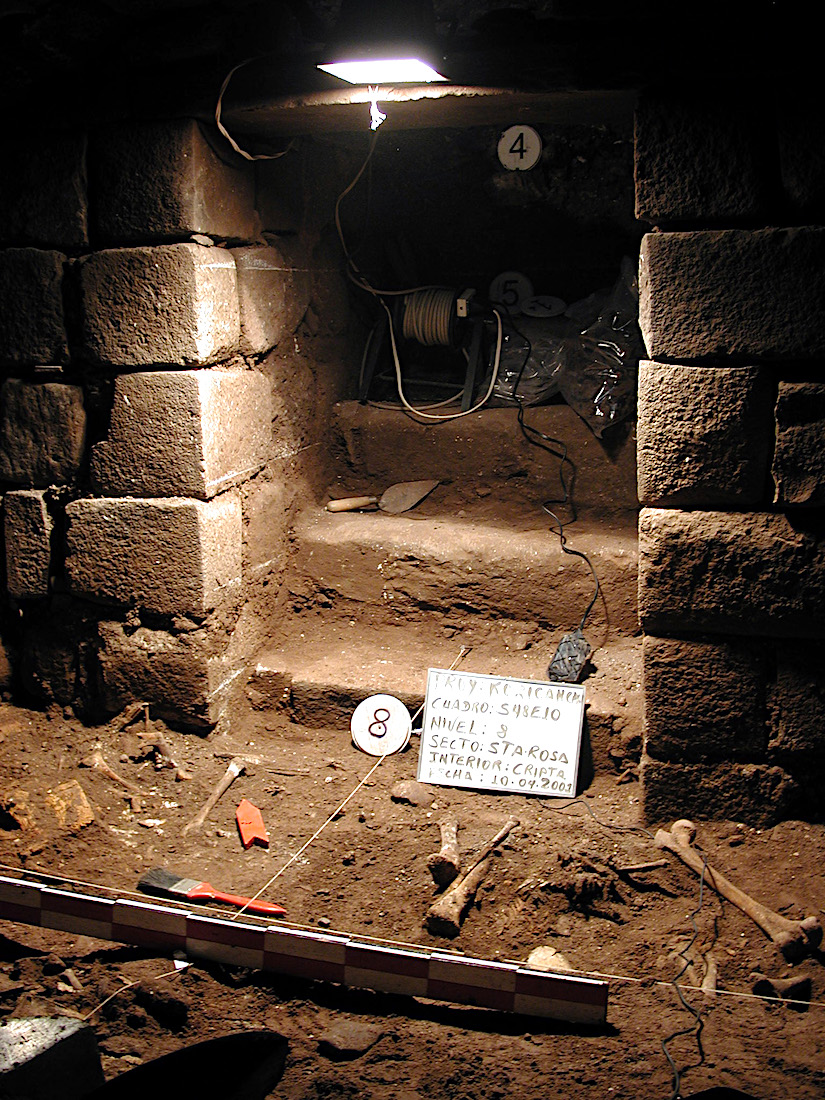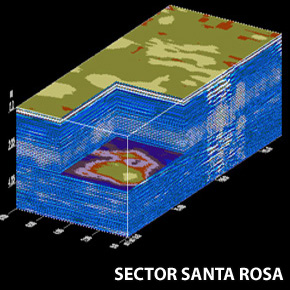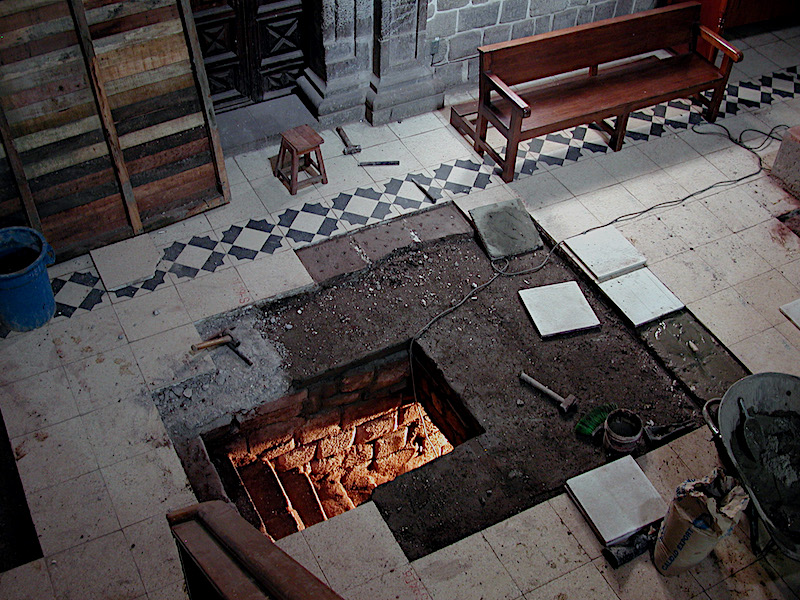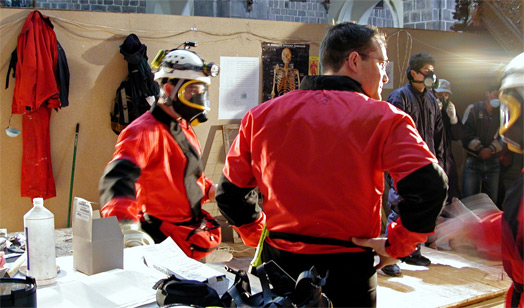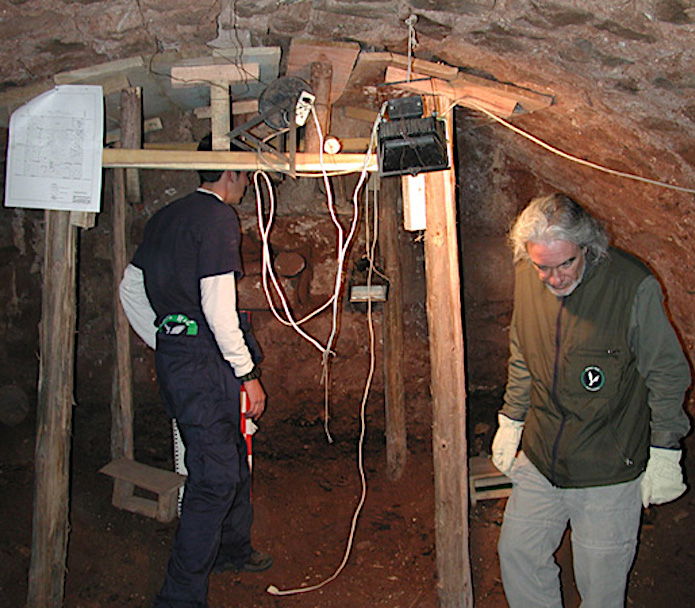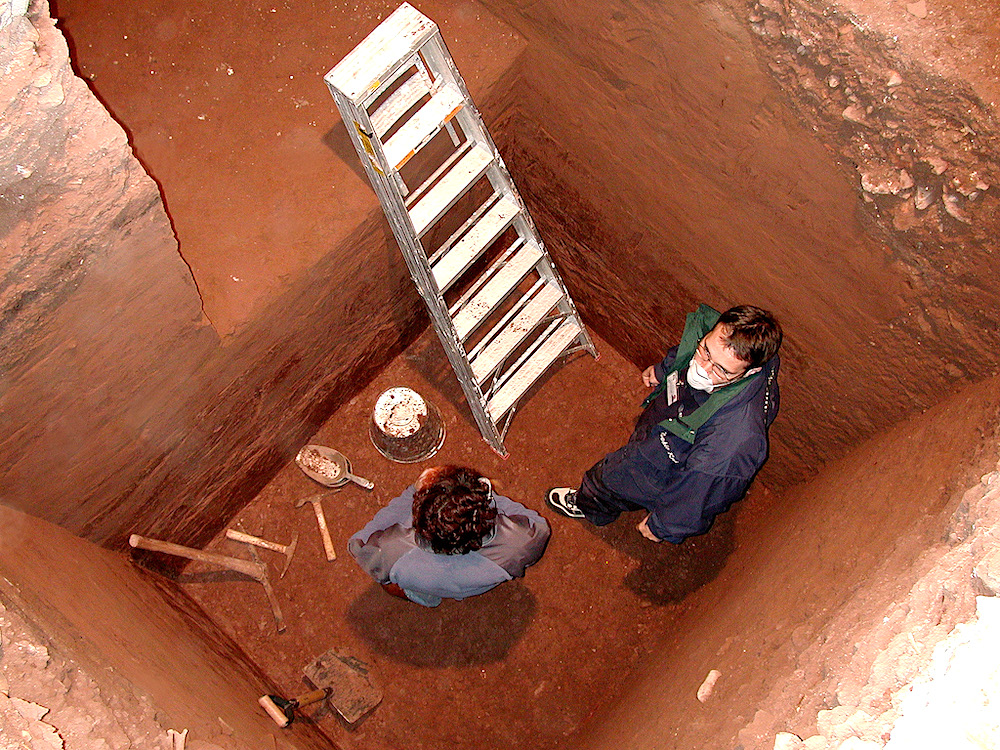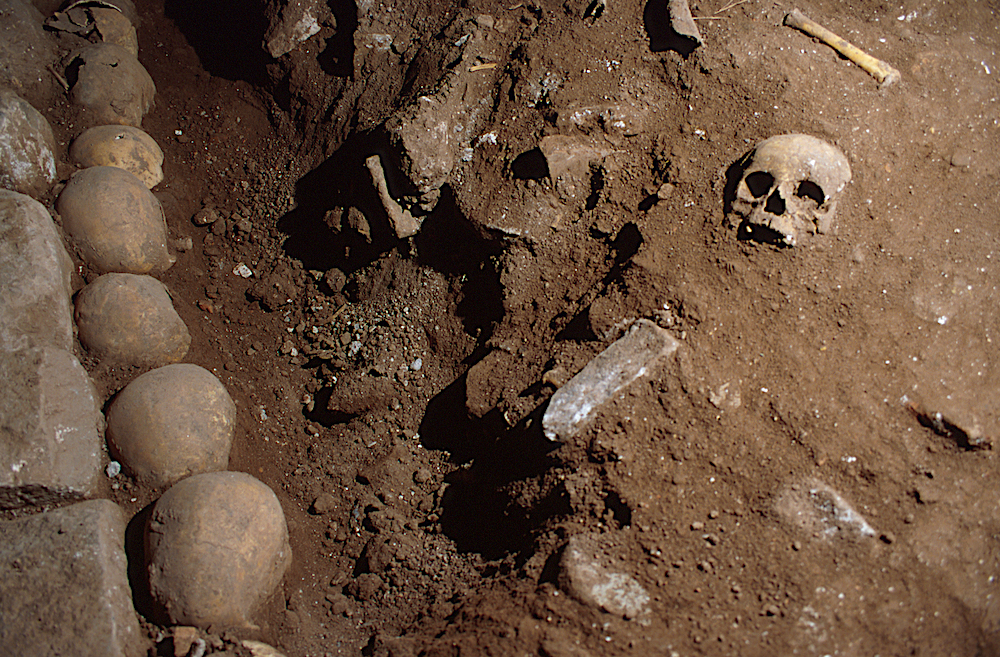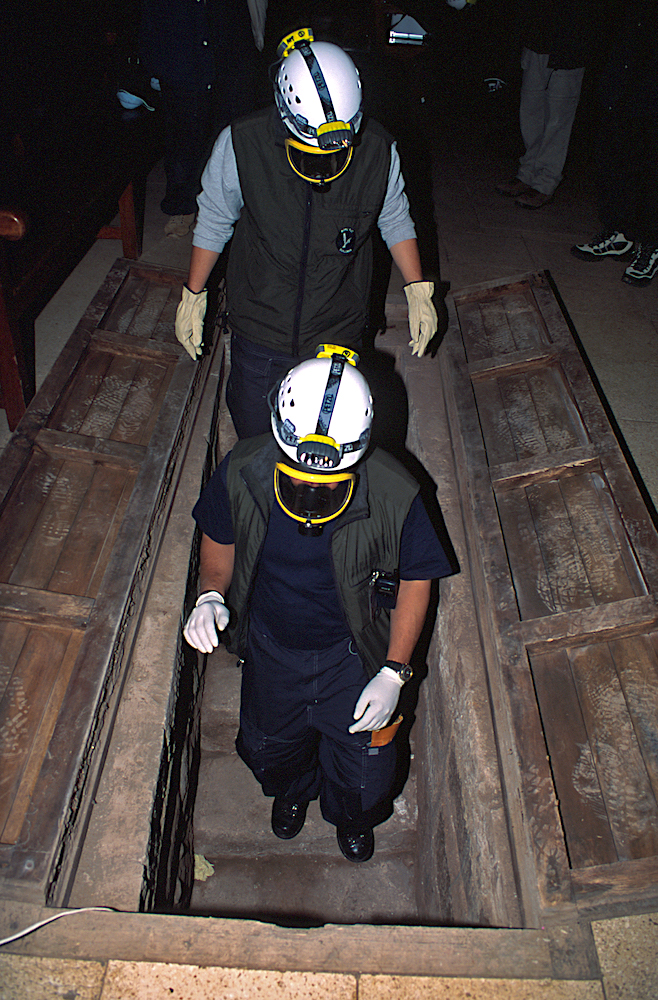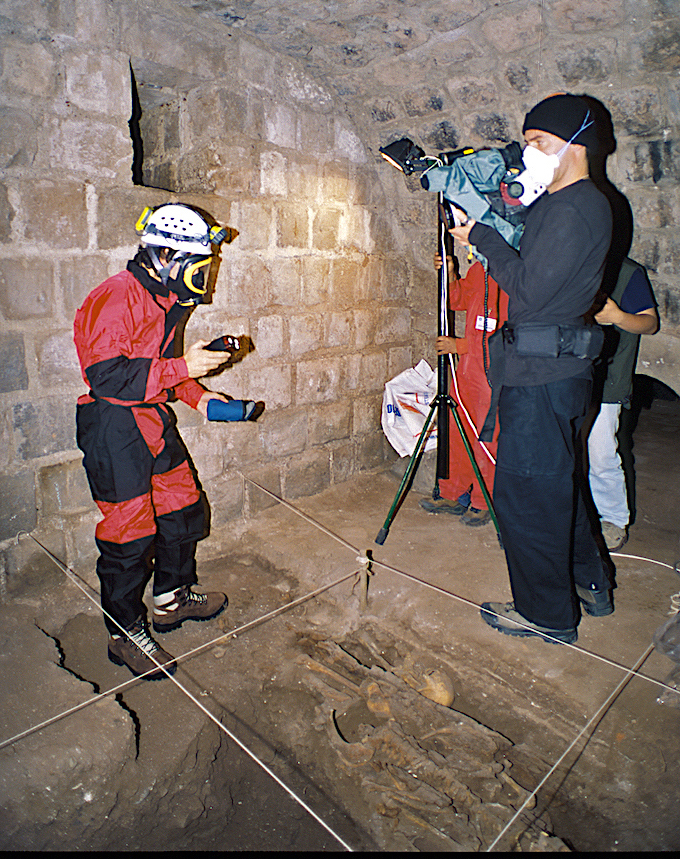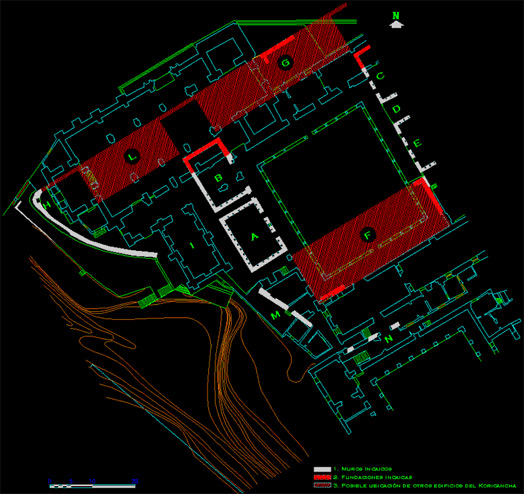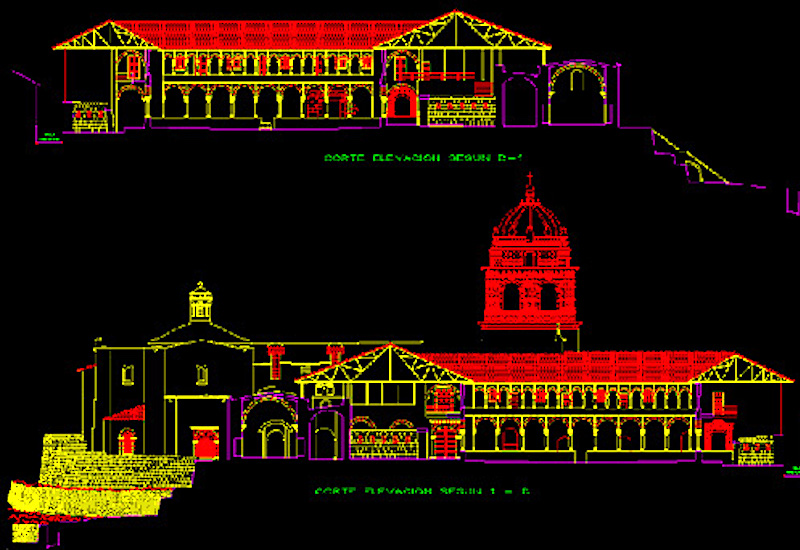“
In the room that provides access to the bell tower of the
Santo Domingo Church, the remote sensing team located evidence of wall-like structures and
disturbed elements. Profile analysis showed that the direction of the walls would originate from
the center of the church nave towards the bell tower, and it could not be determined if these
structures extended beyond the convent or turned towards its interior. After studying the 3D
software of the Ground Penetrating Radar, it was decided to open the mentioned area.
In this excavation pit, the following stages were detected that gave rise to the stratigraphic
reading:
1) Alluvial deposition caused by the overflow of the Tullumayo River (now Av. El Sol). This is
the natural layer on which the Inca building is founded, affected by colonial occupation.
2) Early colonial construction that reuses stones from ancient buildings (Killke), probably
remnants of the old bell tower destroyed by the 1650 earthquake.
3) Deposition of colonial and republican burials. These burials have been heavily disturbed,
initially by subsequent burials and later by the removals caused for the restoration of the
bell tower between 1950 and 1966.
4) Modern floor of the church. To achieve a horizontal and stable surface, it was necessary to
fill the early colonial wall and the disturbed burials with stone and concrete fills, and then
level the surface with a screed or false floor, and finally place the new church floor. This
work was carried out in 1966, before the church was reopened by Monseñor Durand, Bishop of
Callao.
RESULTS OF THE EXCAVATIONS BELL TOWER SECTOR
After removing the modern floor of the church, highly
disturbed colonial burials (mass grave) were discovered, and levels of alluvial ground without
cultural occupation were reached. In the southern part, a double superficial wall built with
Killke stone was identified. A series of completely aligned skulls (ritual type) were found
attached to the wall.
With the work carried out in this pit, the groundwater levels of the church were analyzed,
achieving a very valuable scientific contribution for future analyses of the groundwater
table of the Koricancha. The archaeological research in this area was concluded, and the
church floor was replaced.
